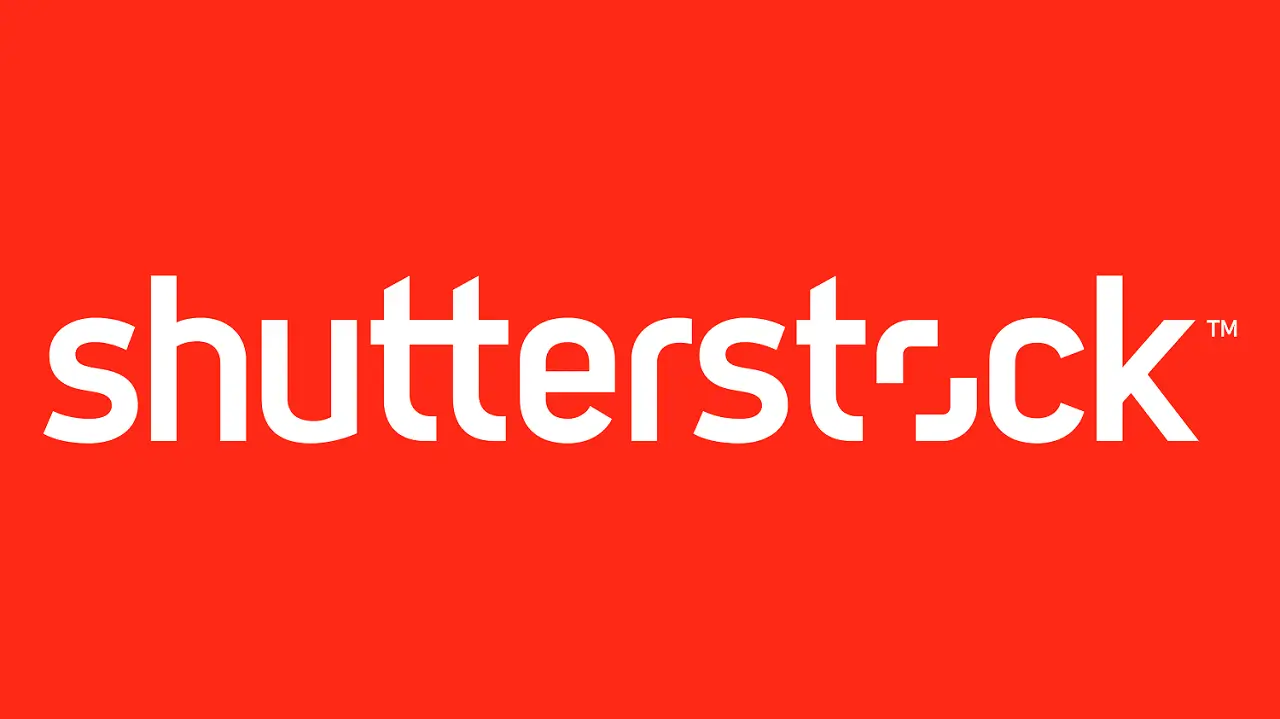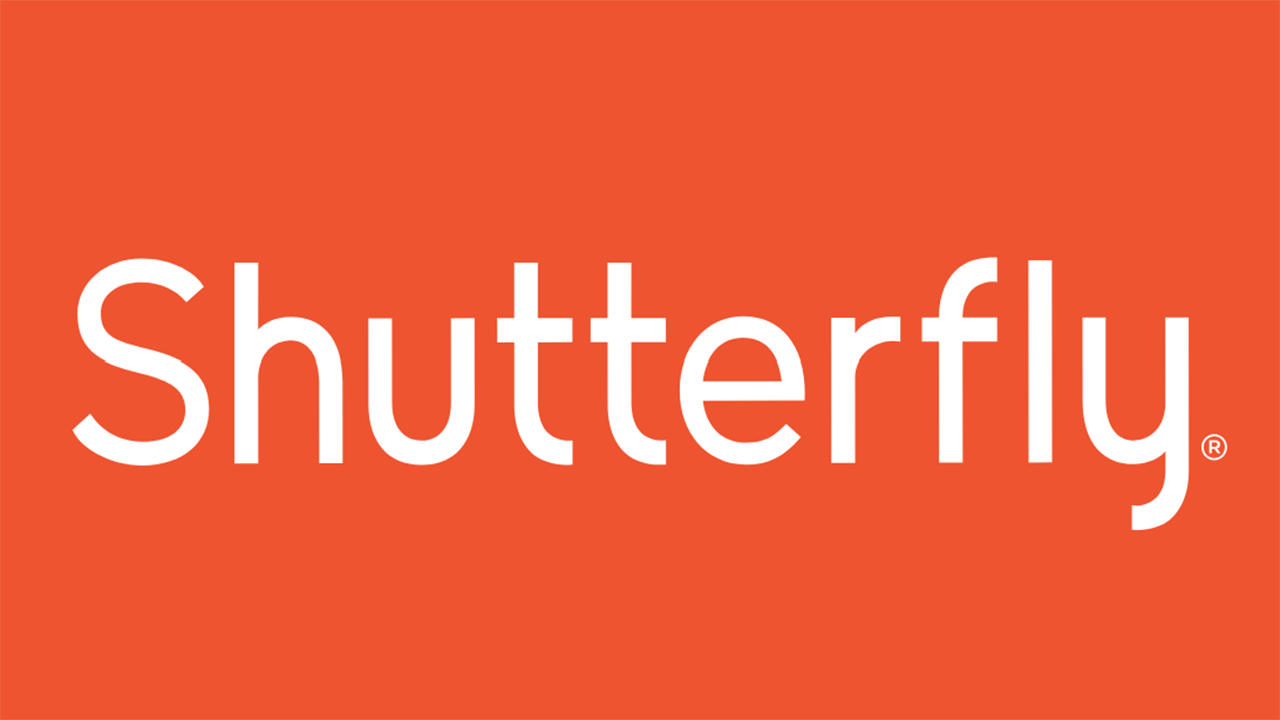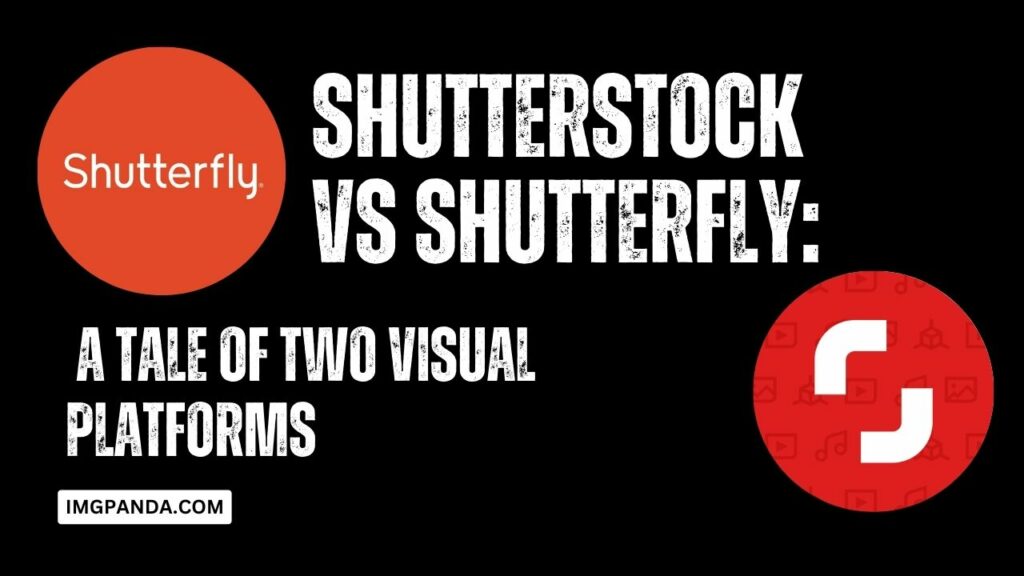Introduction
In the visual content landscape, the choice between platforms can significantly impact the outcome of creative endeavors. This comparative exploration delves into two prominent players, Shutterstock and Shutterfly, each offering distinct approaches to visual expression.
Shutterstock, a global leader, boasts an expansive library of over 350 million royalty-free images, vectors, illustrations, videos, and music tracks. With an emphasis on diversity, global reach, and stringent quality assurance, Shutterstock caters to the dynamic needs of various industries and creative projects.
Shutterfly, founded in 1999, stands out as a personalized photo product platform. Specializing in customization, Shutterfly empowers users to craft unique photo books, cards, calendars, and gifts, infusing a personal touch into every creation.
As we navigate the features, content quality, pricing structures, user experiences, and customer support offerings of both platforms, this exploration aims to guide users in selecting the platform that aligns seamlessly with their creative objectives. Whether seeking ready-made digital assets or personalized photo products, the tale of Shutterstock vs. Shutterfly unfolds with insights tailored to distinct visual aspirations.
Also Read This: Is YouTube Down in My Area? How to Check and Troubleshoot Outages
Overview of Shutterstock

Shutterstock is a leading global provider of high-quality licensed photographs, vectors, illustrations, videos, and music. It boasts a vast library of over 350 million royalty-free images, with thousands of new assets added daily. Catering to a diverse range of industries and creative projects, Shutterstock offers an extensive collection suitable for various purposes.
- Diverse Content: Shutterstock's library encompasses a wide range of content types, including photos, vectors, illustrations, videos, and music tracks. This diversity ensures that users can find the perfect asset for their projects, whether it's for web design, advertising, or print media.
- Global Reach: With users and contributors from around the world, Shutterstock offers a global perspective, providing access to culturally diverse content. This global reach ensures that users can find images and videos that resonate with their target audience, regardless of geographic location.
- Quality Assurance: Shutterstock maintains strict quality standards for its content, ensuring that users have access to high-resolution, professionally curated assets. Each image and video undergoes a rigorous review process to maintain consistency and excellence across the platform.
- Search and Discovery: Shutterstock's intuitive search functionality enables users to find relevant content quickly and efficiently. Users can filter search results by various criteria, including keywords, categories, orientation, and more, making it easy to locate the perfect asset for their projects.
- Licensing Options: Shutterstock offers flexible licensing options to suit different usage requirements. Whether users need images for personal projects, commercial use, or extended licenses for large-scale productions, Shutterstock provides customizable licensing solutions to meet diverse needs.
In addition to its extensive library and user-friendly platform, Shutterstock also offers advanced features such as curated collections, editorials, and premium content subscriptions. These features enhance the user experience and provide access to exclusive content curated by industry experts.
Overall, Shutterstock stands out as a comprehensive platform for sourcing high-quality visual content, catering to the needs of individuals, businesses, and creative professionals worldwide.
Also Read This: The Impact of WireImage in the World of Entertainment Journalism
Overview of Shutterfly

Shutterfly is a popular online platform specializing in personalized photo products and services. Founded in 1999, Shutterfly has become a trusted destination for creating custom photo books, cards, calendars, gifts, and more.
- Personalization: One of Shutterfly's key features is its emphasis on personalization. Users can easily customize a wide range of products with their own photos, text, and designs, allowing them to create unique and meaningful gifts or keepsakes.
- Product Variety: Shutterfly offers a diverse range of products beyond traditional photo prints, including photo books, cards, calendars, home decor items, and gifts. This variety enables users to find the perfect product for any occasion, whether it's a wedding, holiday, or special milestone.
- Easy-to-Use Design Tools: Shutterfly provides intuitive design tools and templates that make the creation process simple and enjoyable. Users can easily upload photos, customize layouts, and add text or embellishments to create professional-looking products without any design experience.
- Quality Printing: Shutterfly is known for its high-quality printing and materials, ensuring that users receive products that meet their expectations. Whether it's a photo book, canvas print, or greeting card, Shutterfly's attention to detail and craftsmanship shine through in every product.
- Convenient Ordering and Delivery: Shutterfly offers a seamless ordering and delivery experience, with options for home delivery or in-store pickup at select retailers. Users can easily track their orders and enjoy fast turnaround times, making it convenient to create and receive personalized products.
In addition to its core offerings, Shutterfly also provides a range of services such as photo storage, sharing, and editing tools. These features enhance the overall user experience and make Shutterfly a one-stop destination for all things related to digital photography and personalized gifts.
Overall, Shutterfly's combination of personalization options, product variety, quality printing, and convenient services make it a top choice for individuals looking to create memorable photo products and gifts.
Also Read This: How to Get Freepik Premium Cookies: Is It Possible?
Features Comparison
When comparing Shutterstock and Shutterfly, it's essential to consider their respective features to determine which platform best suits your needs.
| Feature | Shutterstock | Shutterfly |
|---|---|---|
| Content Library | Shutterstock offers over 350 million royalty-free images, vectors, illustrations, videos, and music tracks, catering to a diverse range of industries and projects. | Shutterfly focuses on personalized photo products such as photo books, cards, calendars, and gifts, allowing users to customize their creations with photos, text, and designs. |
| Personalization | Shutterstock does not offer personalized products; instead, it provides a vast library of pre-made content for users to license and use in their projects. | Shutterfly excels in personalization, allowing users to customize a variety of products with their own photos, text, and designs, creating unique and meaningful gifts or keepsakes. |
| Quality | Shutterstock maintains strict quality standards for its content, ensuring high-resolution, professionally curated assets. | Shutterfly is known for its high-quality printing and materials, ensuring that users receive products that meet their expectations. |
| User Experience | Shutterstock offers an intuitive search functionality and user-friendly platform, making it easy for users to find and license content for their projects. | Shutterfly provides easy-to-use design tools and templates that simplify the creation process, allowing users to create professional-looking products without any design experience. |
| Pricing | Shutterstock offers subscription plans and on-demand pricing options, allowing users to choose the best pricing model based on their usage needs. | Shutterfly's pricing varies depending on the product and customization options chosen by the user, with discounts and promotions frequently available. |
Ultimately, the choice between Shutterstock and Shutterfly depends on your specific requirements and preferences. If you need access to a vast library of pre-made content for professional projects, Shutterstock may be the better option. However, if you're looking to create personalized photo products and gifts, Shutterfly's customization options make it the ideal choice.
Also Read This: Understanding the Effects of Blocking Users on LinkedIn
Quality of Content
When assessing the quality of content on Shutterstock and Shutterfly, several factors come into play, including image resolution, printing quality, and overall curation.
- Shutterstock: Shutterstock maintains strict quality standards for its content library, ensuring that users have access to high-resolution images, vectors, illustrations, videos, and music tracks. Each asset undergoes a rigorous review process to ensure consistency and excellence across the platform. With millions of curated assets available, users can trust that they're accessing professional-grade content for their projects.
- Shutterfly: Shutterfly is known for its high-quality printing and materials when it comes to personalized photo products. Users can expect vibrant colors, sharp images, and durable materials in products such as photo books, cards, calendars, and home decor items. Shutterfly's attention to detail and craftsmanship ensure that users receive products that meet their expectations and stand the test of time.
While both platforms prioritize quality, the nature of the content differs between Shutterstock and Shutterfly. Shutterstock focuses on providing digital assets for various creative projects, ensuring that each asset meets professional standards in terms of resolution, clarity, and artistic merit. On the other hand, Shutterfly specializes in printing personalized photo products, guaranteeing high-quality printing and materials that showcase users' photos in the best possible light.
| Aspect | Shutterstock | Shutterfly |
|---|---|---|
| Content Type | Images, vectors, illustrations, videos, music tracks | Personalized photo products (e.g., photo books, cards, calendars) |
| Quality Standards | High-resolution, professionally curated assets | High-quality printing and materials |
| Review Process | Rigorous review process for each asset | N/A (focuses on printing quality) |
In summary, both Shutterstock and Shutterfly uphold high standards of quality in their respective content offerings. Whether you're looking for digital assets for creative projects or personalized photo products, you can trust that both platforms will deliver content of exceptional quality.
Also Read This: How to Download a Dailymotion Video Using Simple Methods
Pricing Plans
When comparing the pricing plans of Shutterstock and Shutterfly, it's important to consider factors such as subscription options, pricing tiers, and value for money.
- Shutterstock: Shutterstock offers flexible pricing plans to accommodate various usage needs. Users can choose between subscription plans or on-demand pricing options based on their preferences and budget. Subscription plans provide access to a predetermined number of downloads per month, with options for basic, standard, and enhanced licenses. On-demand pricing allows users to purchase individual assets as needed, with prices varying depending on the type of content and intended use.
- Shutterfly: Shutterfly's pricing structure varies depending on the product and customization options chosen by the user. While the platform offers competitive pricing for its personalized photo products, the final cost may vary depending on factors such as product size, paper quality, and additional features. Shutterfly frequently offers discounts and promotions, allowing users to save money on their purchases and take advantage of special offers.
Below is a comparison of the pricing models offered by Shutterstock and Shutterfly:
| Aspect | Shutterstock | Shutterfly |
|---|---|---|
| Subscription Options | Monthly or annual subscription plans with varying download limits | N/A (focuses on personalized product pricing) |
| On-Demand Pricing | Purchase individual assets as needed at variable prices | N/A (focuses on personalized product pricing) |
| Discounts and Promotions | N/A (Subscription plans provide fixed pricing) | Frequent discounts and promotions on personalized photo products |
Ultimately, the choice between Shutterstock and Shutterfly in terms of pricing depends on your specific requirements and usage patterns. If you require access to a large volume of digital assets on a regular basis, Shutterstock's subscription plans may offer better value for money. However, if you're primarily interested in creating personalized photo products, Shutterfly's competitive pricing and frequent promotions make it an attractive option.
Also Read This: Understanding YouTube Impressions and Their Importance for Creators
User Experience
The user experience plays a crucial role in determining the overall satisfaction and usability of a platform. Let's compare the user experience of Shutterstock and Shutterfly based on several key factors.
- Search and Navigation: Shutterstock offers an intuitive search functionality that allows users to easily find relevant content by entering keywords, applying filters, and browsing categories. The platform's user-friendly interface and navigation tools make it simple to explore the vast content library and locate desired assets efficiently.
- Content Discovery: Shutterstock provides curated collections, featured content, and trending topics to help users discover new and popular assets. These curated selections enable users to explore diverse content categories and find inspiration for their projects, enhancing the overall content discovery experience.
- Downloading and Licensing: Shutterstock offers straightforward licensing options and download processes, allowing users to quickly license and download assets for their projects. Users can easily select the appropriate license type and download size, making it convenient to obtain the necessary permissions for their intended use.
- Design Tools and Customization: While Shutterstock primarily focuses on providing pre-made digital assets, it offers limited customization options such as image cropping and editing tools. However, users looking for extensive customization capabilities may find these features lacking compared to platforms like Shutterfly.
- Community and Support: Shutterstock provides access to a community forum, support center, and customer service channels to assist users with any questions or issues they may encounter. The platform's responsive support team and comprehensive help resources ensure that users receive timely assistance and guidance when needed.
On the other hand, Shutterfly offers a tailored user experience specifically geared towards creating personalized photo products:
- Easy-to-Use Design Tools: Shutterfly's design tools and templates make it simple for users to create custom photo books, cards, calendars, and gifts. The platform provides intuitive editing features, drag-and-drop functionality, and a variety of layout options to help users bring their creative vision to life.
- Preview and Proofing: Shutterfly allows users to preview their creations before placing an order, ensuring that they're satisfied with the final product. Users can review the layout, colors, and text placement to make any necessary adjustments before proceeding with their purchase.
- Ordering and Delivery: Shutterfly offers a seamless ordering and delivery experience, with options for home delivery or in-store pickup at select retailers. Users can track their orders and receive updates on shipping status, ensuring a smooth and hassle-free delivery process.
- Customer Support: Shutterfly provides customer support via phone, email, and live chat to assist users with any inquiries or issues. The platform's dedicated support team is available to provide guidance, answer questions, and address concerns to ensure a positive customer experience.
In summary, both Shutterstock and Shutterfly prioritize user experience by offering intuitive interfaces, helpful features, and responsive support options. The choice between the two platforms ultimately depends on the user's specific needs and preferences, whether they require access to digital content for creative projects or personalized photo products for special occasions.
Also Read This: Step-by-Step Guide to Making Handmade Paper Flowers
Customer Support
Effective customer support is essential for ensuring a positive user experience and resolving any issues or concerns promptly. Let's compare the customer support offerings of Shutterstock and Shutterfly:
- Shutterstock: Shutterstock provides comprehensive customer support through various channels, including email support, live chat, and a dedicated help center. Users can submit inquiries, report issues, or seek assistance with licensing or account-related matters via email or live chat. Additionally, Shutterstock's help center offers a wealth of resources, including FAQs, tutorials, and troubleshooting guides, to address common questions and provide self-service solutions.
- Shutterfly: Shutterfly offers a range of customer support options to assist users with their personalized photo products. Users can contact Shutterfly's customer support team via phone, email, or live chat to receive assistance with order inquiries, product customization, or technical issues. Shutterfly's customer support representatives are available to provide personalized assistance and guidance throughout the ordering and customization process, ensuring a smooth and satisfactory experience for users.
Below is a comparison of the customer support offerings provided by Shutterstock and Shutterfly:
| Aspect | Shutterstock | Shutterfly |
|---|---|---|
| Support Channels | Email support, live chat, help center | Phone support, email support, live chat |
| Availability | 24/7 email support, live chat during business hours | Phone and email support during business hours, live chat availability may vary |
| Response Time | Typically within 24 hours for email inquiries, immediate assistance via live chat | Varies depending on the volume of inquiries, live chat response time may vary |
Both Shutterstock and Shutterfly are committed to providing responsive and helpful customer support to assist users with their inquiries and ensure a positive experience. Whether users require assistance with licensing, account management, product customization, or order inquiries, both platforms offer multiple channels for users to seek assistance and receive timely support.
Also Read This: Discover Your YouTuber Persona with This Fun Personality Quiz
FAQ
1. What is Shutterstock's primary focus? Shutterstock is a global provider of licensed visual content, offering a vast library of over 350 million royalty-free images, vectors, illustrations, videos, and music tracks. It caters to various industries and projects, providing diverse and professionally curated assets for creative professionals.
2. What sets Shutterfly apart from other platforms? Shutterfly specializes in personalized photo products and services, allowing users to create custom photo books, cards, calendars, and more. With an emphasis on personalization, Shutterfly offers a range of design tools and templates, making it a go-to destination for unique and meaningful gifts.
3. Does Shutterstock provide personalization options? Shutterstock focuses on pre-made digital assets and does not offer personalized products. Instead, it excels in providing a vast library of high-quality content suitable for licensing and use in various creative projects.
4. How does Shutterfly ensure quality in its products? Shutterfly is known for its high-quality printing and materials in personalized photo products. Users can expect vibrant colors, sharp images, and attention to detail in products like photo books, cards, and calendars, ensuring a superior end product.
5. What is the key differentiator between Shutterstock and Shutterfly? While Shutterstock is ideal for accessing a broad range of pre-made digital content, Shutterfly stands out for its personalization options and the creation of customized photo products, offering a unique and tailored experience for users.
Conclusion
In the comparison between Shutterstock and Shutterfly, both platforms excel in their respective areas. Shutterstock's strength lies in its extensive library of pre-made digital assets suitable for licensing across diverse projects. On the other hand, Shutterfly shines as a personalized photo product platform, providing users with easy-to-use design tools and a variety of customizable options.
Ultimately, the choice between Shutterstock and Shutterfly depends on your specific needs. If you require professional-grade content for creative projects, Shutterstock is the preferred choice. Alternatively, if you seek a platform for creating personalized photo products and gifts, Shutterfly's emphasis on personalization makes it the ideal option.
